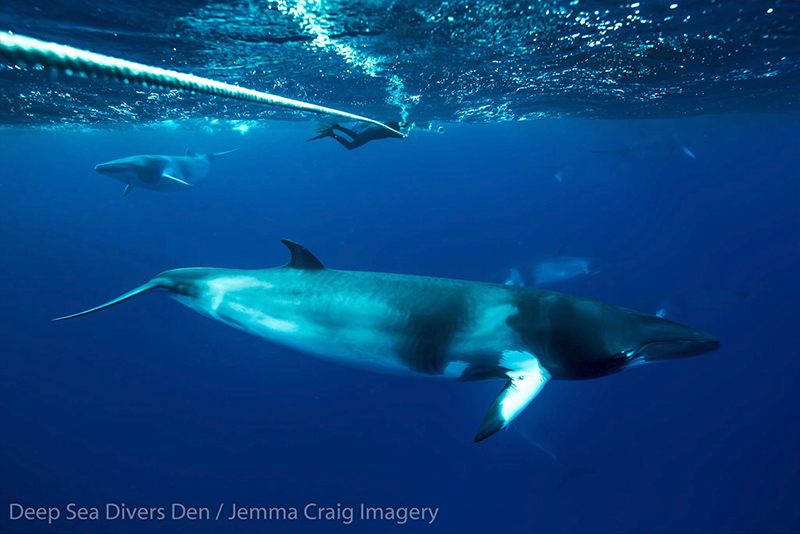Visit the Great Barrier Reef Between June & July to Swim with Minke Whales
First recognized by scientists less than 30 years ago, the dwarf minke whale is both elusive and super friendly.
There is so much we don’t know about these whales despite their proclivity to search out human company.
Scientists don’t understand why, but these whales are extremely curious and will often spend hours swimming around snorkelers and divers, giving quite a show! They are known to follow a boat around for hours, stopping for a look at each new dive site.
When to Swim with Minke Whales
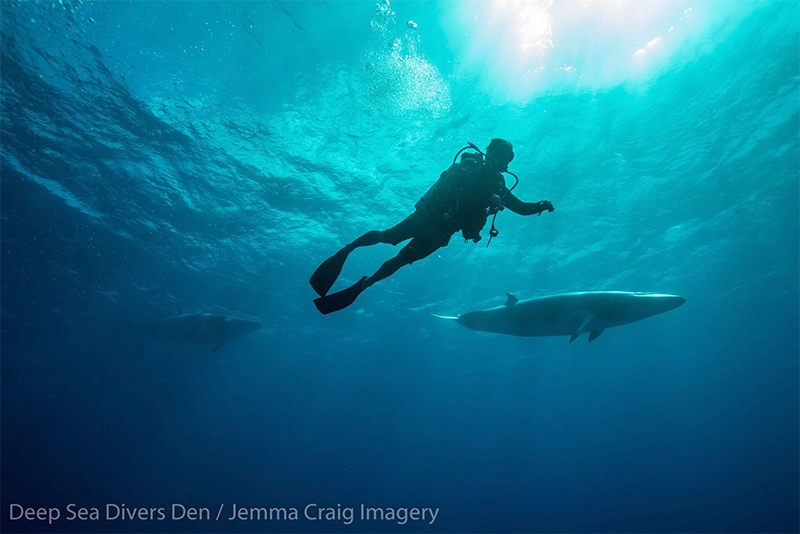
Minke whales are the most common of the great whale species, found in abundance throughout the world’s oceans. They are mostly found in the North Atlantic, North Pacific and Antarctic Oceans.
They are found off the coasts of Australia and New Zealand between March and December, but the best time to see minke whales is in June and July.
Despite their wide reach, swimming with minke whales only happens in The Great Barrier Ribbon Reefs in Tropical North Queenland, Australia. The great thing about this is that minke whales in the Great Barrier Reef are very social and communicative. Expeditions out to the reef regularly report seeing multiple whales in one day!
These multi-day Liveaboard expeditions depart from Cairns, the gateway to the Great Barrier Reef. These expeditions visit unique reef sites each day, offering more opportunities to swim with these gentle creatures.
This is one of the only animal encounters in the world that is entirely on the animal’s own terms. When a pod is spotted, a rope is tossed into the water. Groups of up to 10 swimmers hold on to the rope and the whales can approach or leave as they like. The whales are very generous with their time and once a pod is spotted, its rare if someone on the boat misses out on the experience while waiting their turn.
Things to Know Before Swimming with Minke Whales
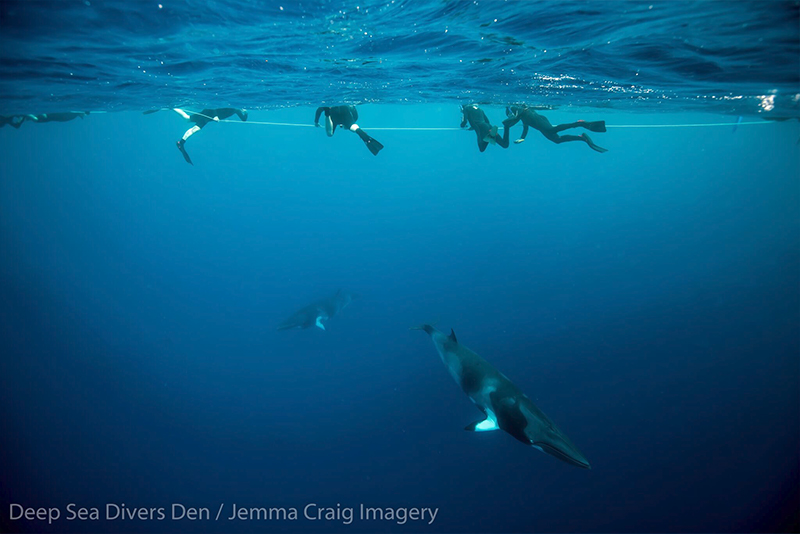
Being in the water with these majestic creatures is described as a life-changing experience. It’s common for people to emerge from the water crying, screaming or just plain speechless.
If you want to add this encounter to your Australia bucket list, here are a few things you should know!
1. Every Australian winter, the minke whales make their annual migration from Antarctica to the Great Barrier Reef from May to August. Plan your trip between June to mid-July for the best odds of seeing a pod. Peak season is in early July.
2. This special experience might take a bit of effort and luck! Only a handful of tour operators have permits to swim with minke whales and you’re never guaranteed an encounter. Increase your odds of swimming with the genial giants by taking a 3-7 night Liveaboard Excursion. In June and July, you’ll have a 98% chance of encountering the whales. It is recommend that you pre-book your excursion.
3. If you’re not keen on spending nights at sea, you can take a day-trip out of Port Douglas. These day-trips have an encounter rate of about 18%. This decreases your odds quite a bit, but if you do encounter them, you will feel as though you won the lottery! Either way it’s an amazing day out on the Great Barrier Reef. These day-trips often give discounts for multiple days out on the boat and they usually end up at different dive sites each day. So, you could stay a few nights in lovely Port Douglas and increase your odds by taking multiple trips out to the reef without feeling like you’re doing the same thing every day.
4. If you go in July, you might even have a chance to see and/or swim with Humpback whales too!
5. You can contribute directly to ongoing research including photo-identification, behavior research and conservation efforts from your minke whale encounter.
6. Dwarf minke whales are the smallest of the baleen whales. Like Humpback whales, they have no teeth, but a series of baleen plates that they use to trap and filter the food krill.
7. There is still much to be learned about these whales. For example, they have never been seen feeding on the Great Barrier Reef so it is assumed that they feed in Open Ocean while in the tropics, but no one really knows!
8. They are one of the fastest whales. They can travel at speeds greater than 20 knots or about 23 miles per hour.
9. Minke whales seem to prefer snorkelers to divers. They tend to get closer to and hang around longer when humans are not wearing large air tanks.
Want a chance to cross this amazing experience off your Bucket List? Visit Australia with the help of a Destination Specialist at About Australia. We can make your once in a lifetime trip Down Under fun and easy!
Add Swimming with Minke Whales to My Trip
Phone us Toll Free on 1-888-359-2877 (CT USA, M-F 8.30am – 5pm).
You May Also Like
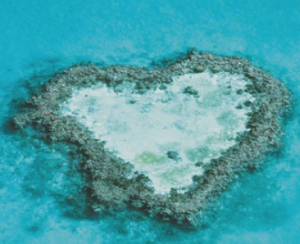
Places to Visit in Australia – A Guide to the Great Barrier Reef |
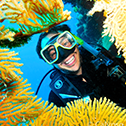
|
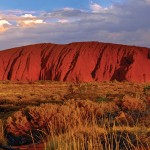
|
Tags: australia, Cairns, dive, great barrier reef, Places to Visit in Australia, planning, Port Douglas, Queensland, scuba, scuba dive, scuba diving, Whales, Wildlife





